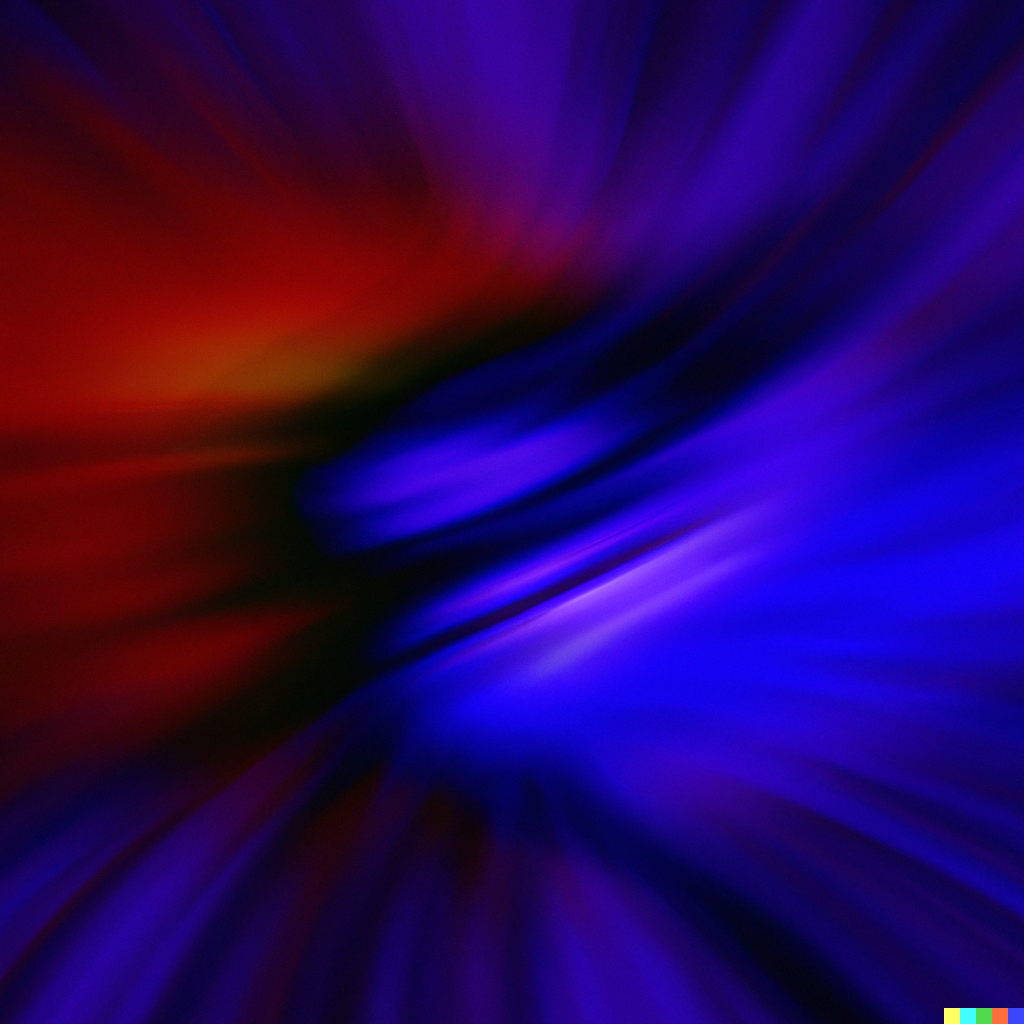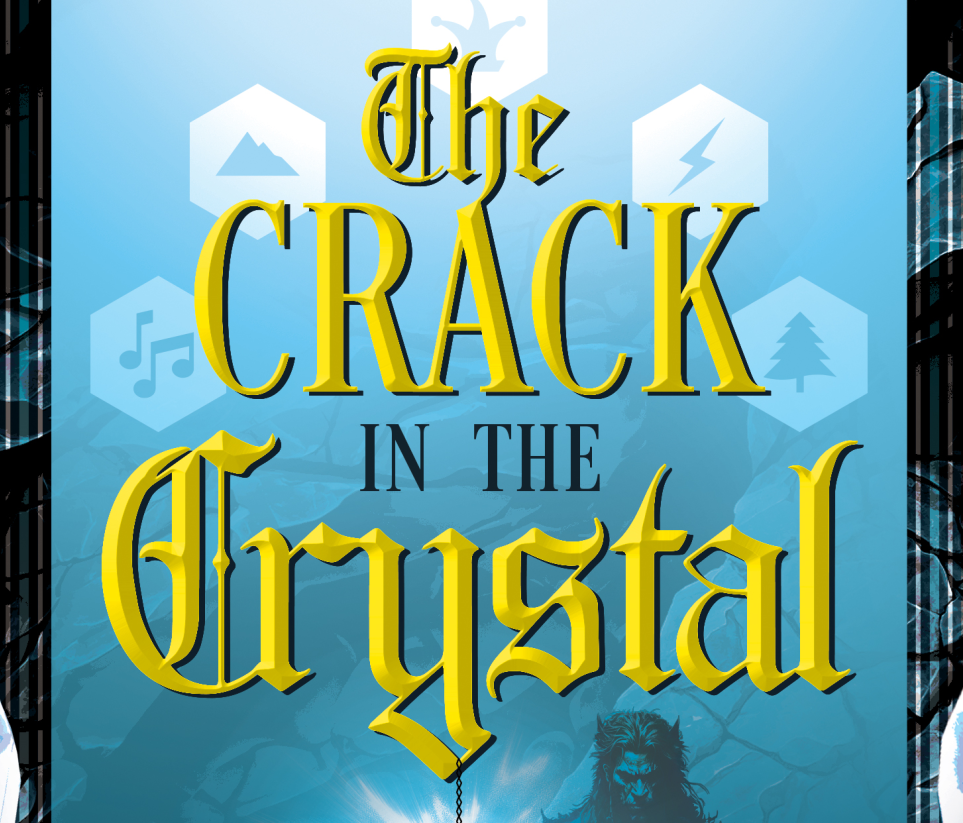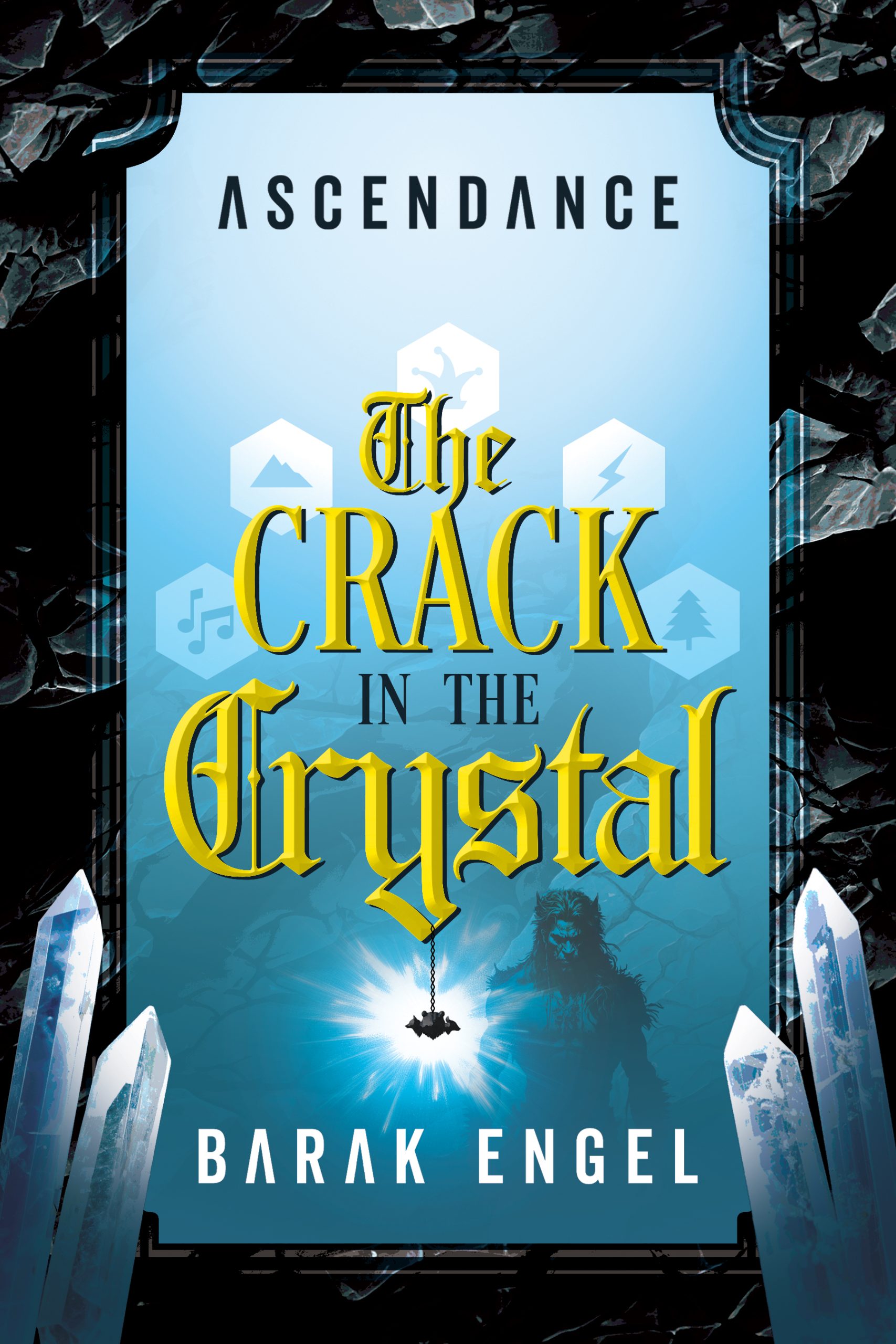Everybody is using AI these days, and sadly, a chunk of it appears to be in content generation, which is awful. It might mean, for example, that you had to wade through a lot of AI-generated schlock pretending to be “books” written by “authors” before you found this one. But AI can useful, even in the creative space.
Here is one way.
Just before I submitted it to Greenleaf for consideration, I ran the manuscript for The Crack in the Crystal (TCitC) through a manuscript technical analysis engine called Marlowe. It spat out a 40+ page report with a lot of interesting insights, some of which can collectively help you answer the question above. That is, do you want to read this book?
I mean, of course you do, but stay with me here.
Note that the manuscript had a different title at that time, and so I had to manually replace the title name in the images I pulled off the report. I absolutely suck at image editing; that’s why the name in the images looks a bit sus.
Anyway, without further ado…
Emotional Wheel
I realize it’s an odd one to start with, but it’s one that matters a great deal to me. Putting aside the irony of an emotionless, large language model AI performing an emotional analysis of a manuscript, it actually did a bang-up job.
When I was asked by Lindsey, my lead editor, about my main goal for the book, the answer was immediate: to bring more joy to the world. We’re all collectively living in a rut these days. New content is so often sad, violent, or disgusting, going for shock value. Social media has made us so desensitized, we seem to have lost our ability to understand nuance, or simply enjoy a sweet tale. The news only tells us awful things, stoking fear to sell more ads. The algorithms governing whether you even learn about this book are fanatically geared towards exploiting and maintaining this state of societal anxiety.
Would Narnia become a place known to all these days? Would Pooh become an iconic honey loving bear?
TCitC isn’t here for shock value. It has plenty of drama and action, difficult moments and soft ones… but it is, ultimately, a joyful book that celebrates our existence, and loving our differences; this is no Game of Thrones. One beta reader surprised me by saying it felt to them like an adult Harry Potter; I’m not a big fan of HP, but I deeply appreciated the sentiment. And so, it appears, did the AI.

Narrative Flow
AI says that, in terms of flow – not content! – TCitC most resembles The Return of the King, the third book in the Lord of the Rings trilogy. This certainly would not have occurred to me, but as you can see from the graph, they match up pretty well.

Pacing and Narrative Time
Closely related to flow are pace and narrative time (again – not content!).
So many modern titles start with a bang, often an action-oriented scene from within later in the book. It can be an effective way to hook you in, but my choice was to stick to a slower initial pace.
TCitC has a fair amount of world building, and it spends some time loading up Chekhov’s Gun with so many bullets, it might as well be Chekhov’s Gatling.
The book has three parts (or acts); the first, entitled “The Book of Stories”, comprising chapters 1-13, is where this takes place. As you can see below, there’s also a fair amount of narrative upfront, before TCitC transitions to being primarily dialogue-driven.
One of my favorite fantasy titles is Orson Scott Card’s Hart’s Hope. In my experience with it, it moved about gently until the point where is suddenly grabbed me by the proverbial cojones (sorry) and never let go. One beta reader of TCitC put it to me this way: “you kinda wonder where the book is going, then it suddenly does and you’re just holding on for dear life.”
Without spoiling the fun, there’s also an excellent reason tied to the final twist as to why the structure has to be this way.
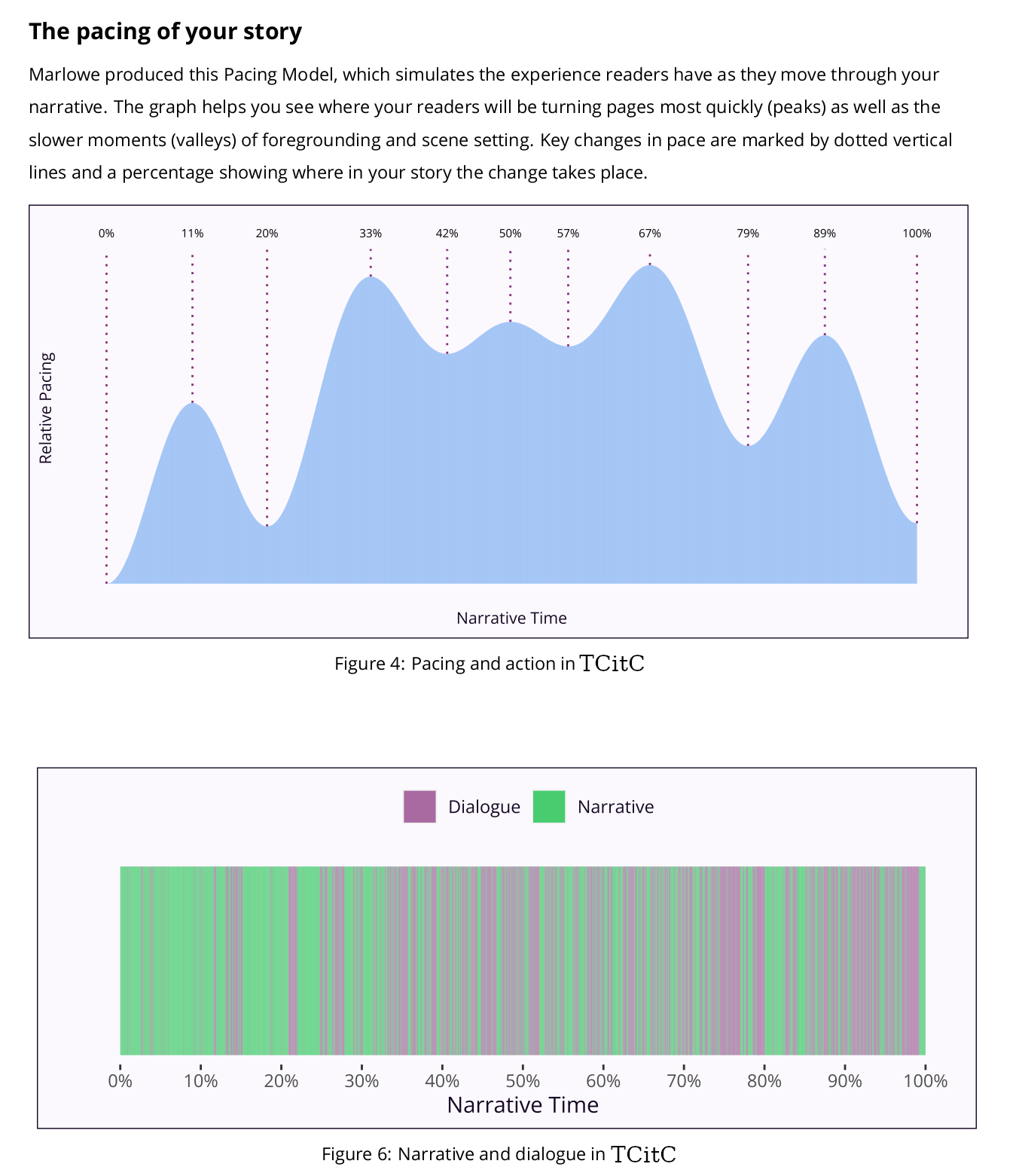
Comparative Title Analysis
Getting further into the weeds, the AI provided some ideas of how TCitC fits into the world of existing literature.
First comes an analysis of narrative style (not content!). Here, the AI gave me the most incredible compliment, as out of the millions of titles at its disposal, it chose The Hitchhikers’ Guide to the Galaxy as stylistically closest. The Guide is one of my absolute favorite books ever, and one of the greatest books ever written. Months later, I am still stunned by this particular outcome.
Keep in mind, again, that what this is saying is that TCitC may feel a bit like the Guide as you read it, not that the content is in any way similar.
Important to note here is the title The Magicians. We will see it show up again shortly.
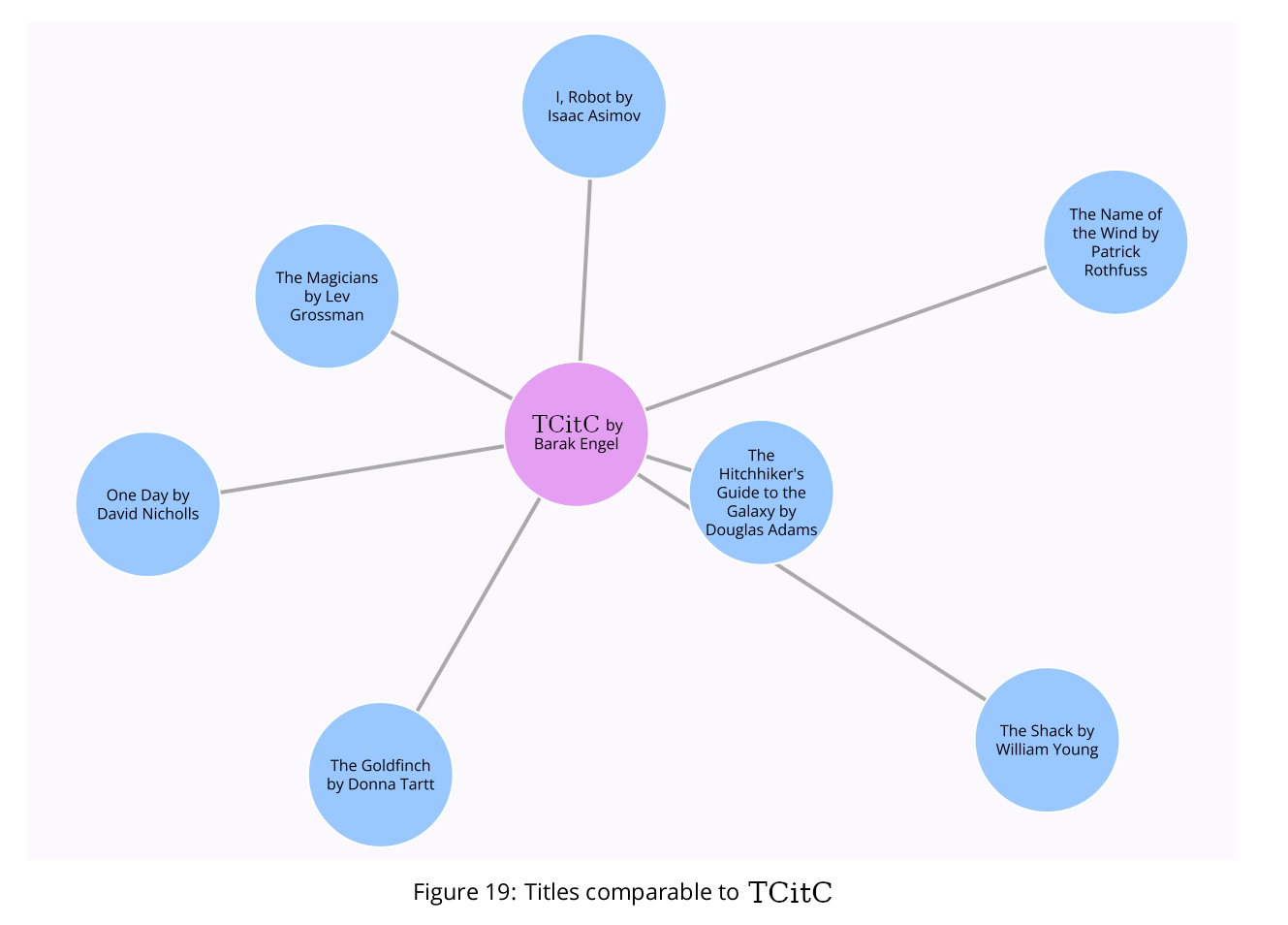
Finally we get to content. The little mechanical demon provided two other graphs that shed further light on what TCitC is like. Most importantly here, for me, is the reappearance of The Magicians. When I was going through my first round of agent submissions, dealing with the hundreds of rejections, one question I had to answer repeatedly was about comparative titles. One that I brought up, as in “if you liked that, you will also like this” (either book or drama series), was indeed The Magicians.
It was cool to see the AI suss this out as well.


Readability and Suitability for a Younger Audience
Don’t worry, parents, I didn’t forget about you!
TCitC is, essentially, PG13. It is also right in the sweet spot of best-selling fiction in terms of accessibility.
With that said, TCitC takes place in a world in which relationship structures aren’t rigid and jobs like a courtesan’s are considered normal, as are being gay, gender-fluid, and so on. To avoid spoilers, I’ll just say that the book touches lightly on these subjects.
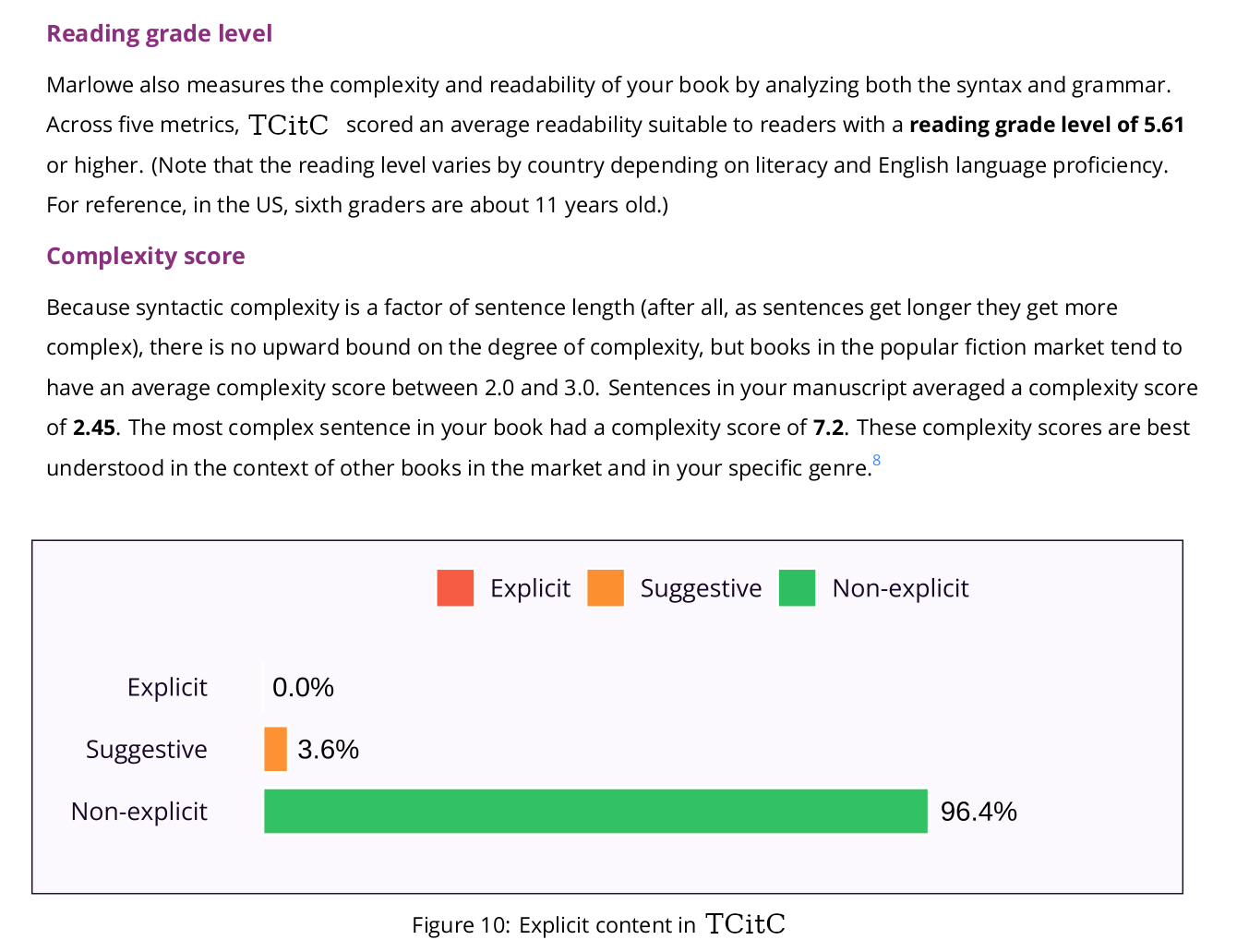
So there you have it. I do sincerely hope that this helped you make the decision to explore Port Kyber with our five rather unlucky heroes.
